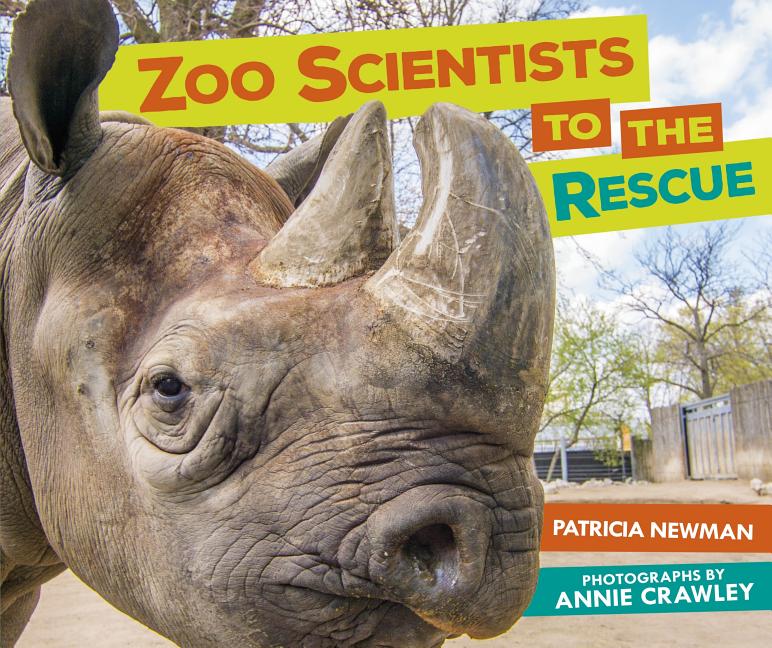Meet-the-Author Recording with Patricia Newman
Zoo Scientists to the Rescue |
Patricia Newman introduces and shares some of the backstory for creating Zoo Scientists to the Rescue.
Translate this transcript in the header View this transcript Dark mode on/off
Patricia Newman: Hi, this is Patricia Newman, and I'm the author of "Zoo Scientists to the Rescue." I'm going to tell you a bit about how I came to write this book, and then I'll share an excerpt with you. When my niece was in fifth grade, she told me about a persuasive essay her teacher assigned the class.
The topic was zoos. Are they good, or are they bad? Only, the teacher did not provide a balanced look at zoos. Most of the literature she shared with the kids was anti-zoo. As the mother of a zookeeper - my daughter's a tiger keeper - I knew my niece and kids like her needed more facts.
That experience planted the seeds for "Zoo Scientists to the Rescue." And here's the first chapter. It's called "The Zoo: A Living Library."
Inside the zoo, the wild, the rare, and the exotic await. Animals and habitats you've only read about come to life. Down one path, macaws squawk in the hot, sticky air of the tropical rainforest. Down another path, hippos wallow in ponds surrounded by muddy banks. Up a steep hill, condors perch in their nests and look at the world below them.
Inside the zoo, the distance between continents shrinks. African lions roar. Asian siamangs hoot. North American alligators snap their gigantic jaws, and Australian kookaburras laugh.
More than 181 million people visit zoos every year. That's more than the number of people who attend Major League Baseball, pro hockey, pro basketball, and pro football games combined. But zoos aren't just entertainment centers. They are living libraries. Zoos allow us to get close enough to animals to hear their stories, stories in which humans often play a part, either as hero or villain.
Zoos also give scientists an up-close look at animals that are difficult to observe in the wild. These scientists use their training and a hefty dose of ingenuity to study their animals in their care. What do these animals eat? How do they reproduce? Where do they fit in their natural habitats, and how do we preserve them in the wild?
The answers to these questions unlock the animals' secrets. Read on to meet three zoo scientists who are adding to our knowledge of three remarkable species. Meredith Bastian once lived among wild orangutans, and now shows zoo visitors how to help these hairy apes survive. Jeff Baughman helps rescue black-footed ferrets from the brink of extinction by breeding them in the zoo and reintroducing them into the wild. And Rachel Santymire uses zoo science to give critically endangered wild black rhinos in South Africa a fighting chances.
These scientists have played important roles in their animals' stories, stories full of adventure, tragedy, and joy that unfold much like your favorite novel.
This Meet-the-Author Recording with Patricia Newman was exclusively created in March 2018 by TeachingBooks with thanks to Lerner.



